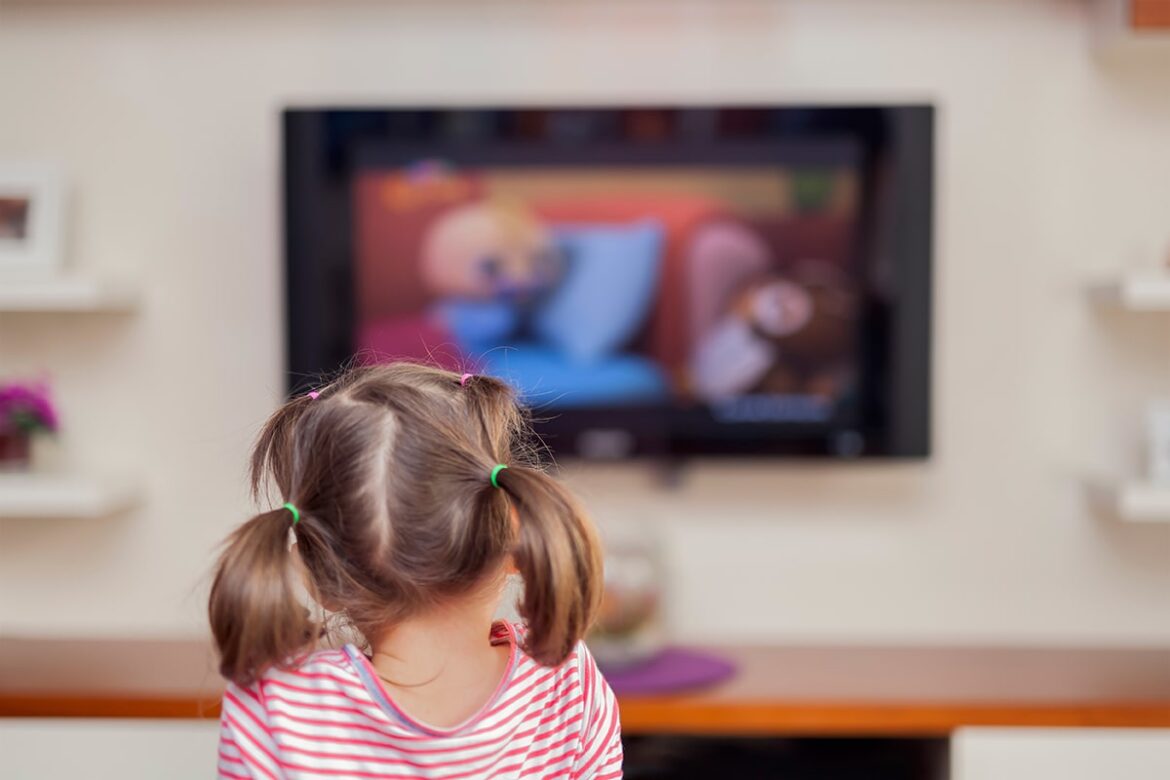You might the words screen time for children and automatically cringe at the hours your kids have spent watching TV, tapping at a tablet screen, or attached to a games console. While there are risks associated with excessive screen time, taking a moderate approach can allow your family to find a healthy balance.
So, we wanted to take a look at the studies and evidence as to ‘how much screen time for kids is too much’ and give you some practical tips to stop your kids overdoing it!
The Case for Limiting Screen Time for Children
The prevailing opinion has been that screen time is inherently bad for children. While the reality is more complex than a simple blanket statement, there are some factors that would suggest placing limits on the amount of hours children spend plonked in front of a TV, computer, or mobile device is a good idea.
Physical Ramifications
One of the most compelling reasons is that screen time tends to take place sitting down, and this inactivity is a key contributor to obesity in children and adults. It also discourages interest in outdoor and imaginative play leading to unfit and lethargic kids. Children who spend a lot of time in front of a screen also have a higher chance of posture problems, which is particularly worrying at crucial developmental stages.
Mental/Emotional
It’s not just the physical but mental and emotional consequences of too much screen time for children. Your kids’ sleep pattern, mood, and behaviour can also be adversely affected with the blue light exposure before bedtime.
And if they’re attached to an electronic device, it decreases the amount of time they have to complete homework, be creative, and spend time with their family. There’s also been a developing correlation between average screen time and cases of myopia (short-sightedness) in kids.
So, How Much Screen Time for Kids Should I Allow?

Young children are particularly susceptible to the negative impact of excessive screen time. Their minds are at a crucial point of development, and they require direct interaction with parents and other kids offline, rather than staring at a tablet or TV. Therefore, recommendations are made suggesting that babies and toddlers under the age of 2 have no screen time, and computer use is restricted to kids over the age of 3.
But, the amount of time your kids spend in front of a screen depends on a number of factors, particularly age. While it’s easy and appropriate to keep babies and toddlers away from the computer, adolescents will need to use it.
Adapting to Age and Circumstances
The AAP has made recommendations about how much time each age category should use a screen:
- Under 18 months = no screens, except the occasional video chat if necessary.
- 18-24 months = Parents may introduce a limited amount of age-appropriate programming, whilst supervised.
- 2 – 5 years = Up to an hour of screen time, mainly under supervision.
- 6+ = Parents can allow a gradual increase in screen time and access to a wider range of content, but this should be supervised where possible. Physical activity, offline play, and sleep must not be disrupted by screen time.
The Case for a Flexible Approach
The list of possible adverse effects might prompt parents to consider the complete prohibition of screens. However, there is evidence to support a more flexible approach that balances kids’ desire to watch TV and films, play games, and use the computer, with the need for them to participate in offline activities.
The reality of the modern world dictates that children need to develop their digital skills as they grow. It’s practically impossible to enter the workplace without at least some technological literacy, and restricting use of computers, for example, will place kids at a disadvantage further along the line.
In fact, interactive devices have become a staple of the classroom, and there is evidence that access to educational content does help children to learn. This can also reinforce development of verbal skills, dexterity, and long-term memory.
The key is to choose TV shows, movies, games, and other content that is age-appropriate, high-quality, and supportive of ongoing development. According to Dr Andrew Pryzbylski, from the Oxford Internet Institute, the broader family context – that is, the amount of time spent in front of a screen together, rather than individual watching – is more important than the number of hours. A study undertaken by the University of Michigan backs this theory.
Parents are therefore advised to reframe screen time as a family activity, rather than one that kids do on their own. This allows parents to keep an eye on what their children are watching and encourage offline interaction through discussion of what they’ve seen, how it made them feel, and information they’ve learned.
The American Academy of Pediatrics (AAP) recommends developing ‘a family media plan that takes into account the health, education and entertainment needs of each child as well as the whole family.’ As with many aspects of parenting, it’s all about finding balance.
Tips for Limiting Screen Time for Children
Unfortunately, some children do develop signs of screen addiction, such as a lack of interest in other activities, frustration when screen time is restricted, dishonest behaviour, and reliance on screen to relieve negative feelings. If you’re concerned about this, restrict screen time in the first instance, and speak with your family doctor if the situation escalates.
Here are some of the practical ways you can limit screen time for your children:
- Have parts of the home, such as bedrooms, that are free from digital devices.
- Encourage family activities that don’t involve digital media, and remind kids how they should behave online.
- Don’t forget that your kids may also be using screens at school. If you have concerns, discuss them with your child’s teacher, and establish the educational benefit of their additional screen time. If they’ve had a screen-heavy day, consider reducing their home use.
- Set limits based on activity rather than time. Some children can be frustrated if they are in the middle of doing something and their ‘timer runs out’. Instead, allow them time to do certain activities and they will be more willing to relinquish the device!
- Avoid screens before bed. This can often do the most damage and interrupt good quality sleep. Switch screen times for the morning or middle of the day to give a better sense of balance.
The Latest Research in 2019
Pediatrician Professor Russell Viner, writing in the British Medical Journal (BMJ), has just released a review of current research that indicates there is no need to restrict screen time itself. Instead, as discussed above, greater emphasis should be placed on the quality and appropriateness of content that children are exposed to while ensuring that they still have time for physical activity and offline interaction.
The only time that should have an enforced screen embargo, according to Professor Viner, is the hour before bedtime. It’s a principle that adults should probably take on board too!
What’s the Verdict?
Taking all the research into account, a balanced approach seems to be best when it comes to screen time. There are inherent problems linked with time spent in front of a display, particularly for infants, so caution is advised, but where families can find equilibrium between time spent with electronics, physical activity, and offline experiences, kids will benefit from the best of all worlds.

